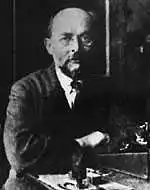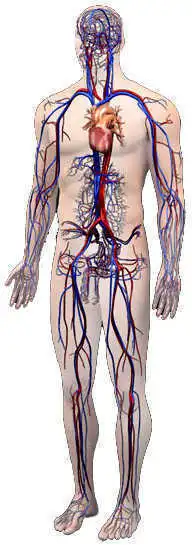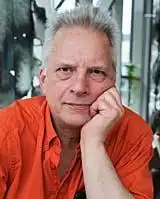Life Energy Beliefs
B
Life Force Ideas Around the World
Here are the B entries of life energy beliefs around the world and from antiquity to the present. An edited and expanded version of this Life Energy A to Z is published in my book
Life Energy Encyclopedia.
B
Badi is, among the original population Temuan in Malaysia, the evil spirit
from dead animals, especially the elephant, rhinoceros, and tapir. It is also
called jemoi. Badi is sometimes mistakenly mentioned as a synonym to life energy such as qi. Spirit or ghost is called hantu. The Malaysian and Temuan word for life
force is semangat (see this word).
baraka is the word for God's breath in sufism, a mystical and philosophical
movement within Islam. Baraka stands for spiritual strength and can be
transmitted between people, who have it to differing degrees. Those who
have plenty of baraka are blessed, and able much more than others.
Biefeld-Brown effect see electro-gravitation.
Biocircuit see electro-gravitation.
Biocosmic energy is sometimes mentioned as Oscar Brunler's term for life
force, but he called it mental radiation or brain radiation (see this word). The
term biocosmic energy is sometimes used in parapsychological research.
See also HEF.
Biocosmology is a term used for cosmic influence on Earth biology. See
also heliobiology.
Biodynamic ether see life ether.
Bioenergy is a term that in modern use stands for fuel from natural
materials, such as peat. During the 20th century it has also been used as
term for all kinds of theories about a life force, within such research.

Biofield is an expression used by, among others, the Russian scientist Yu
Tszyan Kanchzhen, who in 1991 patented a BCI, Biomicrowave
Communications Installation, which was supposed to transmit information
on DNA level. Biofield refers approximately to a radiation that is
fundamental and instrumental in living bodies, and that different
therapies claim to influence. Compare aura. The thought of a biofield
operative on embryonic level was introduced in 1944 by the biophysicist
Alexander Gurwitsch (1874-1954), who talked about biophotons. See also
mitogenetic radiation.
Bioheliology see heliobiology.
Biological energy see psychotronic energy.
Biomagnetism is a term used for ideas about every living body emanating
radiation, expressed by George de la Warr (1904-1969), among others. See
for example HEF, aura, radionics and prephysical energy.
Biophotones see mitogenetic radiation and biofield.
Bioplasma is a term for the life force used by Russian and Czech
parapsychological researchers in the 20th century. See also HEF. The term
may have been introduced in 1944 by the Russian biophysicist V. S.
Grishenko, or in 1967 by him and his colleague Viktor M. Inyushin.
Bios see life.

Blood has in most cultures been regarded with the same amazement and
interest as breathing. It has also often been regarded as the carrier of life
force, for example in Paracelsus' ideas about mumia (see this word).
Bloodletting was the dominating treatment against most diseases, up to
the 19th century. Before the discovery of the circulatory system in 1628 by
the English physician William Harvey (1578-1657), the function of the
blood and its way through the body was a mystery, which caused a lot of
speculation and theories, but rarely with much likeness to qi or other ideas
about a life energy flowing into and out of the body – since blood
normally does not. Still, its crucial importance to living creatures, and its
circulation in the body, may have influenced such ideas indirectly. See for
example ch'ulel.
Blow in the meaning of breathing on someone or something, such as
blowing on a wound, is a traditional remedy without great presumptions,
but also in many cultures a way of healing, such as among some North
American Indians.
Boha/poha/puha is a term among the Shoshon, a North American Indian
tribe, for a power that permeates nature, and that people can acquire to
different degrees. Compare manitou and orenda.

Brain radiation or mental radiation is a theory by the English physicist
Oscar Brunler (1902?-1952), who also worked much with light waves and
their effects on the human psyche, the latter a theory he published in 1929.
He gave light therapy treatments, where the green color was regarded as
balancing, because it is in the middle of the spectrum. Modern light
therapy is partly based on his work. Brain radiation was a force from the
brain that he measured with a biometer, which had been invented by the
French scientist Antoine Bovis (1871-1947) to measure the quality in wine
without having to open the bottle. The method was refined by Brunler and
Bovis in cooperation. Bovis was also the first to experiment with the
preservative effect of the pyramid shape, in the 1920s (see shape power).
Brunler formed the Biometric Research Foundation in the USA. He saw this
raditation from living creatures as a kind of life force with spiritually
enhancing capacity, in a development through several incarnations.
Breath is an obvious prerequisite for survival, which has been well known
through history, and the reason for the symbolic importance it has been
given in every culture. Breath is also used in many cultures as a technique
to induce higher levels of consciousness, cure the body, and strengthen
one's sense of vitality. Some ritualized breathing, such as in yoga, makes a
distinction between breathing through the left or right nostril, but mainly
the difference between inhalation and exhalation is given symbolic
meaning – such as the first inhalation of the newborn baby, and the last
exhalation of the dying (see also life). For example, there is a Hindu ritual
where the two are regarded as complementary assurances of the I as an
immortal spirit, somewhat comparable to what is today called affirmation.
In a similar Islamic tradition, the exhalation represents “There is no God”
and the inhalation carries the necessary completion of the sentence: “but
Allah.” Thereby the breathing becomes a continuously repeated
confession of faith. Within Buddhism there are methods with extended or
halted breathing, for the purpose of halting the confusing flow of
impressions and see beyond them. In these kinds of exercises it is not
necessary to perceive a life energy flow inside or beyond breathing. The
fact that breathing, contrary to heartbeat and many other bodily functions,
is easily controlled by one's will, has made it a central method to conjure
up spiritual experiences and contemplate the mystery of existence. Most
meditation techniques have instructions on how to regulate breathing. The
difference between inhaling and exhaling is both concrete and symbolic –
the former is to receive, the latter to give away, both in absolute need of
the other. The body's instinctual priority to inhale is contrasted by many
Eastern exercises that instead focus on extended exhaling. In many
religious practices, though, inhalation is put first, as a process of receiving
divine grace or power. It is evident in the word inspiration, which
originally meant inhalation. In Eastern traditions, but rarely in Western
ones, exhalation is regarded as an important purification, where inner
shortcomings and defects are removed. See also spirit and oxygen.
Brown's gas see hydroxy.
Bula ('the word') is among the Thonga people in southeast Africa a kind
of force, independent of the deities, which is used by the initiated to make
predictions. It is connected to the ancestors, as utterances of theirs.
Life Energy Beliefs from A to Z
|
My Life Energy Books
Qi, prana, spirit, ruach, pneuma, and many other life forces around the world explained and compared. Click the image to see the book at Amazon (paid link).
The life energy qi (also chi or ki) explained, with several very easy exercises to awaken, increase, and use it. Click the image to see the book at Amazon (paid link).
|
My Other Websites
The ancient Chinese life energy
qi (
chi) explained and how to exercise it.
Creation stories from around the world, and the ancient cosmology they reveal.
What the Greek philosophers believed about the cosmos, their religion and their gods.
Taoism, the ancient Chinese philosophy of life explained. Also, the complete Tao Te Ching online.
Other Books of Mine
The Greek philosophers and what they thought about cosmology, myth, and the gods.
Click the image to see the book at Amazon (paid link).
This book examines Jungian theories on myth and religion, from Carl G. Jung to Jordan B. Peterson.
Click the image to see the book at Amazon (paid link).
The Taoism of Lao Tzu Explained. The great Taoist classic, translated and extensively commented chapter by chapter.
Click the image to see the book at Amazon (paid link).
Erroneous Tao Te Ching Citations Examined. 90 of the most spread false Lao Tzu quotes, why they are false and where they are really from.
Click the image to see the book at Amazon (paid link).
About me
I'm a Swedish author and historian of ideas, researching the thought patterns in creation myths. I've also written books about Taoism, the Tarot, and life force concepts around the world.
Click the image to get to my personal website.
 Cosmos of the Ancients
Cosmos of the Ancients Archetypes of Mythology
Archetypes of Mythology Tao Te Ching
Tao Te Ching Fake Lao Tzu Quotes
Fake Lao Tzu Quotes Stefan Stenudd
Stefan Stenudd


 Life Energy Encyclopedia
Life Energy Encyclopedia Qi — Increase your life energy
Qi — Increase your life energy